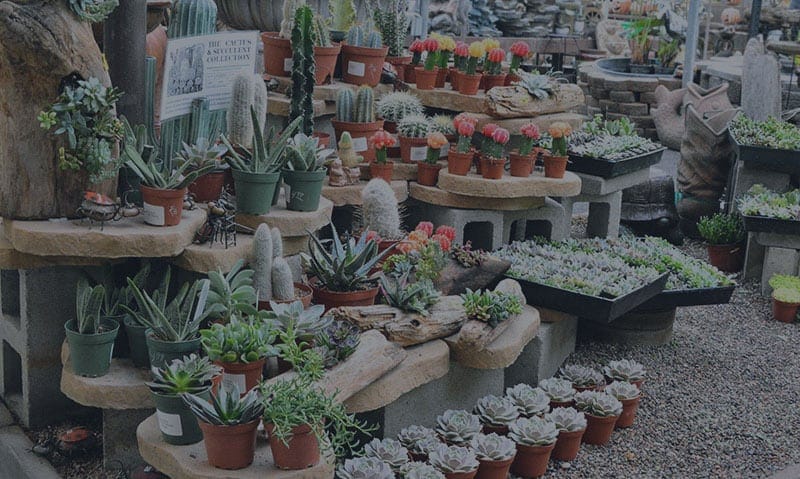Newsletter Articles
Preparing Your Home for Spring Vegetable Planting in Southern California
Written by Kelsey W.
Planting a vegetable garden is a rewarding experience and can encourage you to make better health decisions with fresh vegetables from your own garden. Growing vegetables is also quite fun, especially when you get to harvest the vegetables you’ve grown from seed or from tiny plants.
Even if you’ve never planted a garden before, you probably know that most plants go into the ground sometime in the spring, and harvests occur later in the year. However, there is some nuance to the process, especially when it comes to Southern California.
With the generally mild winter weather that SoCal experiences, we get to enjoy a longer growing season than more northerly locations. As a consequence, we can often get an extra harvest from our plants, as well as start our planting earlier than the folks in places where it regularly freezes for much of the year.
If you’re planning or trying to plan a garden, the winter is the ideal time to get everything settled as far as the plants you’ll grow and the timing for putting them into the ground. Let’s learn how to prepare your garden for the upcoming growing season and how to maximize your soil and space.
When Should You Plant a Vegetable Garden in Southern California?
In some climates, March is the earliest point at which you can plant your vegetables, but you can back that up to February for Southern California.
You can even try planting things earlier than February, but just bear in mind that sunlight is still relatively scarce in the winter. It’s tough for vegetables to get the amount of sunlight they need each day unless you place them in full view of the sun along the south-facing part of your home.
The only dicey part of planting your vegetables really early in a sunny spot is that the sun will eventually become much more intense and last for much longer each day. Your early vegetables might feel a little worn out by the sun once the warmer months start.
If you just can’t wait to get those plants into the ground, you might consider planting them as a container garden, so you’ll have the option to move the plants once the sunlight starts coming back in full force in the late spring and into the summer.
And as always, if your garden will live on a balcony or a small porch, you’ll want to make sure that spot gets ample sunlight throughout the spring and into the summer. A shady balcony on a north-facing apartment will make things a little tough as far as sunlight goes, so you might find yourself waiting a little longer into the spring until you have adequate sunlight for your plants.
Should You Do Anything Special to the Soil Before Planting?
Technically, you can grow your vegetables in any bed or container that’s filled with potting soil meant for vegetables. Growing vegetables is actually incredibly easy, and it’s super beginner-friendly, especially when you give your plants healthy soil.
To get an even better yield from your plants, you can add a small layer of compost to the top of the soil. Mix the compost into the top few inches of soil about a month before you actually put your plants into the ground or into your containers.
During the month before you bring home your little vegetable plants, the soil will grow healthy microbes and organisms that will help feed your plants. Once you’ve started growing a yearly vegetable garden, you can even take last year’s plants and create compost out of them, thereby recycling all of your plant material for the new year.
You can also protect the soil by putting a layer of leaves over the soil to prevent erosion and to make sure the compost stays nice and fertile. Depending on the type of plants you put into the soil, you can actually leave the roots in the soil over the winter and just cut back what’s at the top for your compost.
What to Plant First for Big Spring and Summer Yields
The first crops planted each year are generally cool-season options that include leafy vegetables like spinach and lettuce, as well as the ever-present carrot. You can actually plant carrots at any time of the year in SoCal, but if you plant them in the early spring, you can get multiple yields by planting another crop in the middle of the year.
If you’re keen on starting your garden from seed, you can start planting peppers, tomatoes, and summer squash in late March or April. You can wait until May if you’re starting with seedlings, but honestly, any time from March onward is fine whether you’re putting seeds into the ground or bringing seedlings home to grow.
If you’re bringing home some root vegetable seedlings for your garden, March is also an excellent time to start caring for those plants as they’ll deliver some of their best-tasting yields in the summer. Beets, carrots, radishes, and turnip seedlings are all ready to start enjoying your garden in the early spring.
If you miss your chance to get your root vegetable seedlings home in the spring, the next best option is to plant them from seed in the late summer. After March ends and we start April, you can add Brussels sprouts, corn, cucumbers, and tomatoes to your garden for yields in the late summer and into the fall.
Planting Vegetables That Will Produce for Many Years
For most of the plants you’ll put into your garden, you can expect them to experience a single growing season and eventually reach a point where you’ll get to harvest the edible parts of the plant. After the harvest, you might replace the plant with another type of vegetable that grows well in the fall or winter.
However, some vegetables do regrow each year, and you can make them a semi-permanent part of your backyard garden. While annual vegetables will go through their entire life cycle in just one season, other vegetables will establish a root system and grow back every year.
Some types of artichokes will grow back each year, and many varieties of onions will continue producing over and over. Asparagus is another vegetable that you can put into the ground and enjoy repeated yields each year. Did you know that asparagus can live up to 20 years in your garden?
You may want to plant a variety of vegetables that may die off after a year or continue growing into the next season, just for the variety. Other perennial crops that you can add to your garden as long-term plant friends include chives, rhubarb, and horseradish.
You Can Actually Plant Vegetables All Year Long in Southern California
One thing to remember about planting a vegetable garden is that the weather is so mild in some places that you can plant your vegetables in the spring and keep them producing throughout the summer and well into the winter.
It’s not uncommon to see plants you put into the ground last year flourishing throughout the colder months. However, you’ll want to take it on a case-by-case basis as far as replacing those plants or letting them continue to reside in your garden.
Some plants can get a little woody over time, so you might want to consider turning last year’s plants into this year’s mulch and compost. Yes, you might feel a little attached to that pepper plant, but keeping it going year after year may result in smaller yields over time.
Technically, tomato plants are annuals and are designed to die off around the first frost. However, what if you’re in one of the many communities of Southern California that never sees temperatures approaching the freezing level? Sometimes, the year is just very warm, and temperatures never get frigid, so your tomatoes just keep on growing!
Get Your Spring Garden Started with Help from Green Thumb Nursery
It might not feel like spring when you wake up on a cool winter morning, but it’s the best time to create a plan for the vegetables you’ll grow throughout the year. The experts at Green Thumb Nursery are here to help with advice on planting your vegetables and keeping them happy throughout the year.
Do you like what you see? Sign up ford our weekly newsletter to get content like this every week!


